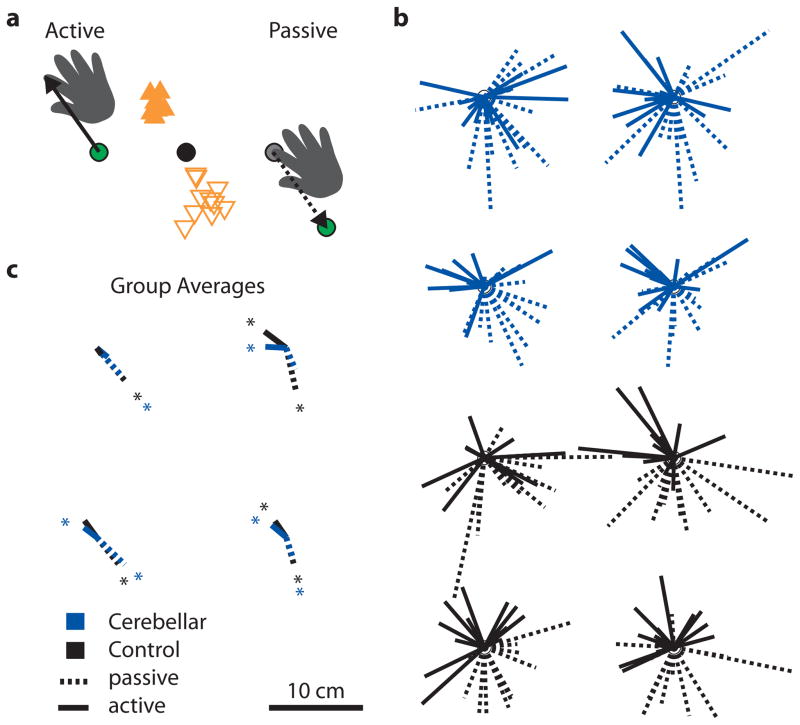Figure 3.
Directional accuracy (bias) across targets for the multi-joint localization experiment. a. Bias was calculated as the average vector between the actual fingertip position (unseen) and the perceived fingertip position (i.e. the position of the green visual dot— target or cursor depending on the task). In the active task, subjects were asked to move their fingertip directly under the green target dot. They tended to move the index finger too far and further left of the green target dot, which suggests that they thought their hand was closer to them and to the right. In the passive task, subjects moved the green cursor dot too short and further to the right of their stationary fingertip. This also shows that they thought their hand was closer to them and to the right. Thus, the bias is the same for the passive and active tasks, even though the bias vectors point in opposite directions. b. Each vector represents an individual cerebellar patient’s (blue) or control subject’s (black) average bias for that target. c. Average group bias was consistent across the target workspace and across patients and controls. On average, subjects thought their fingertip was closer to them and rightward of its actual position (right-handed perspective). *P < 0.05.

